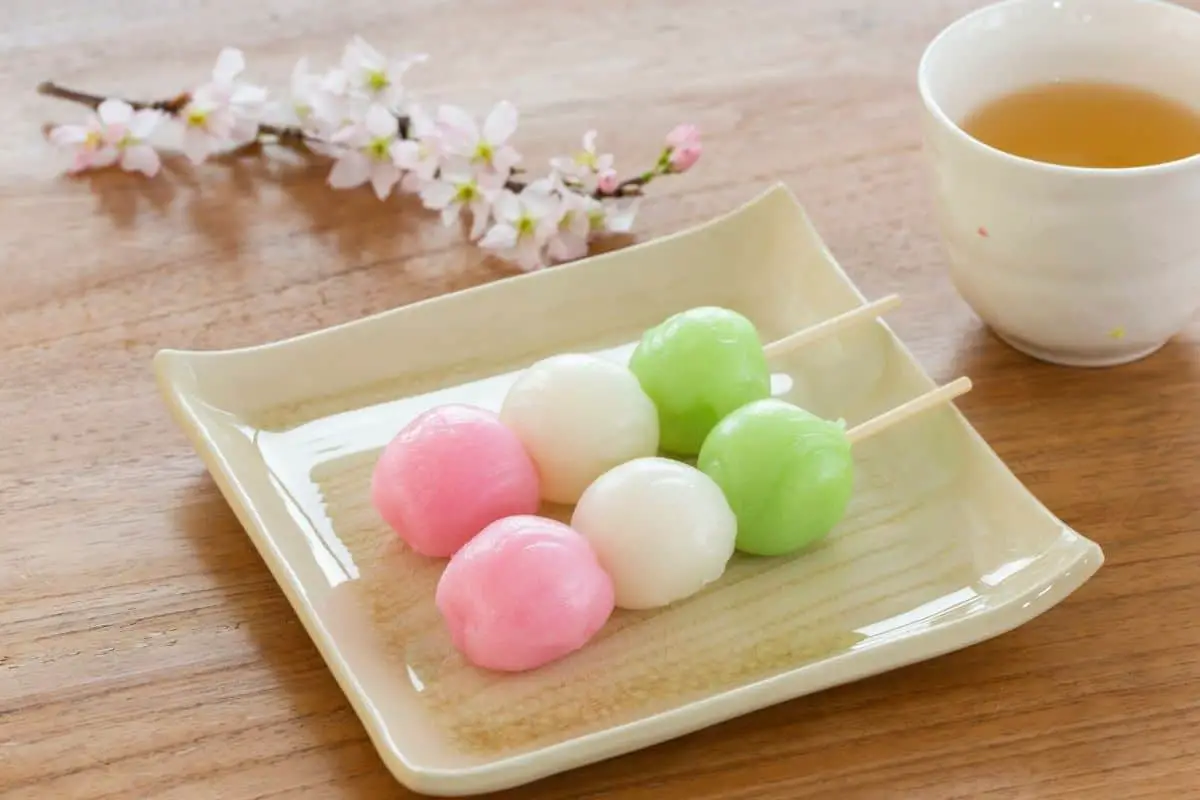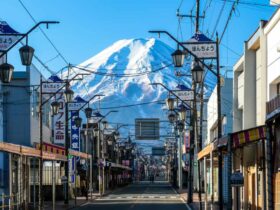Wagashi is available in many cafés, coffee shops, shrines, and most places that sell and serve green tea in Japan, especially matcha. Gourmet sweet boutiques, supermarkets, shopping outlets, convenience stores, and food stalls during festivals or matsuri also sell them.
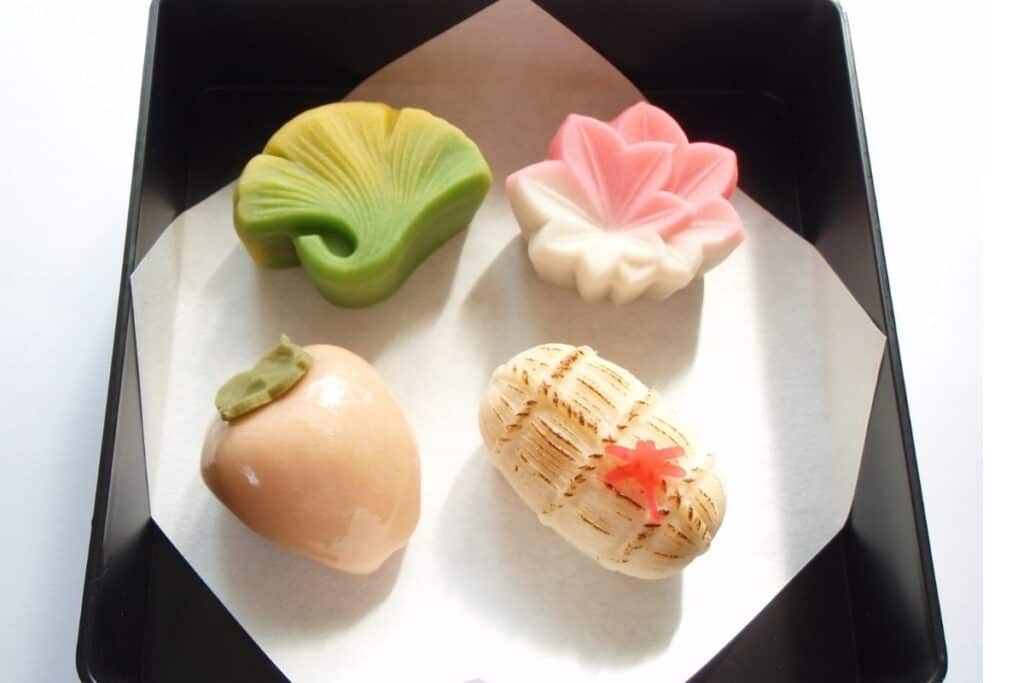
Wagashi are Japanese Style confections, sweets, and desserts, typically made of mochi (chewy pounded rice) Anko (azuki sweet bean paste), and various fruits and berries, which are frequently paired with green tea. Plant-based ingredients are used to create wagashi.
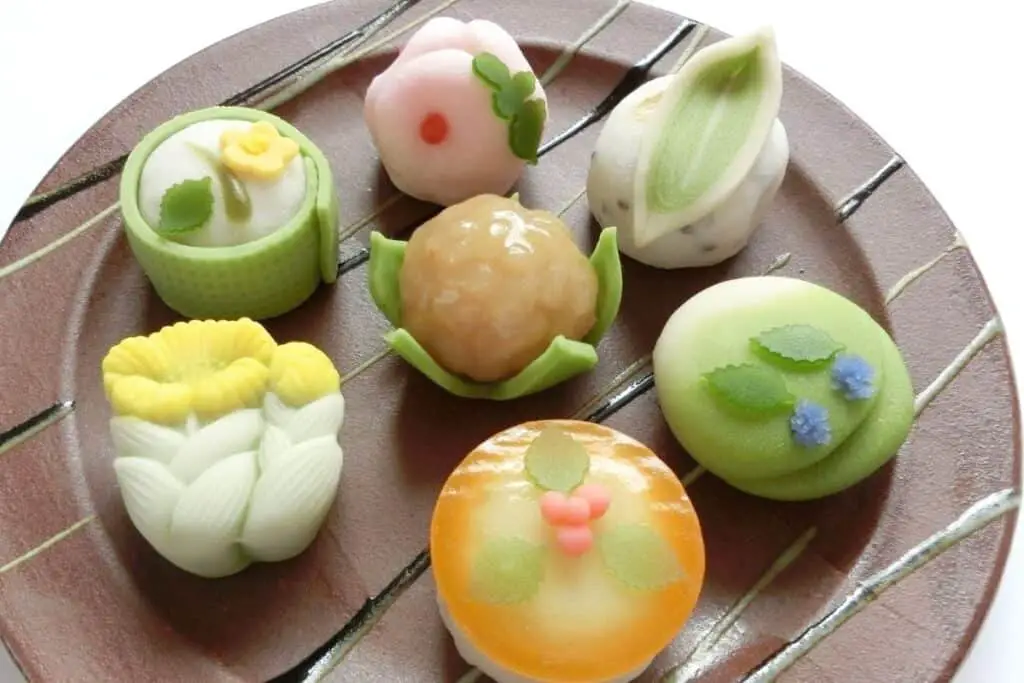
Some Wagashi are common favorites across Japan and throughout the year, while others are solely produced in certain regions or during specific seasons or holidays.
Originally, the Japanese term for sweets, kashi referred to fruits and nuts. By the conclusion of the Muromachi era, sugar had become a common household item due to increased sugar trade between China and Japan.
The adoption of tea and dim sum contributed to the popularity of wagashi throughout Japan’s Edo era.
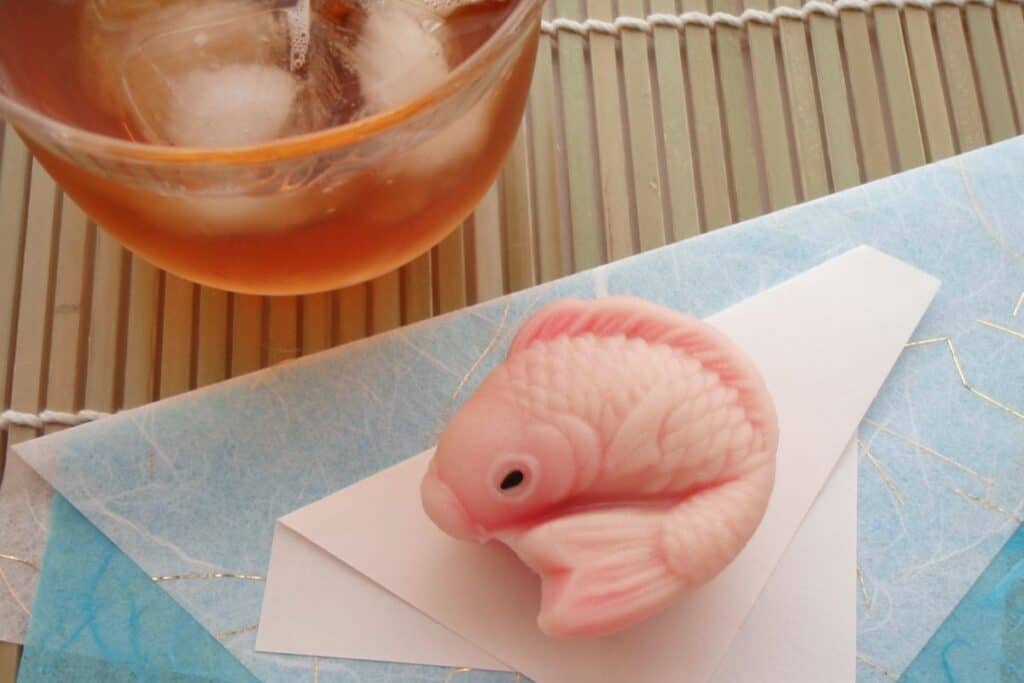
Wagashi usually takes a significant amount of time and skill to make. Its name for each type comes from Japanese poems, historical events, or a piece of nature’s beauty.
Wagashi can be given as a presents, sold during matsuri or Japanese festivals, or served as a special gift to guests at Japanese homes.
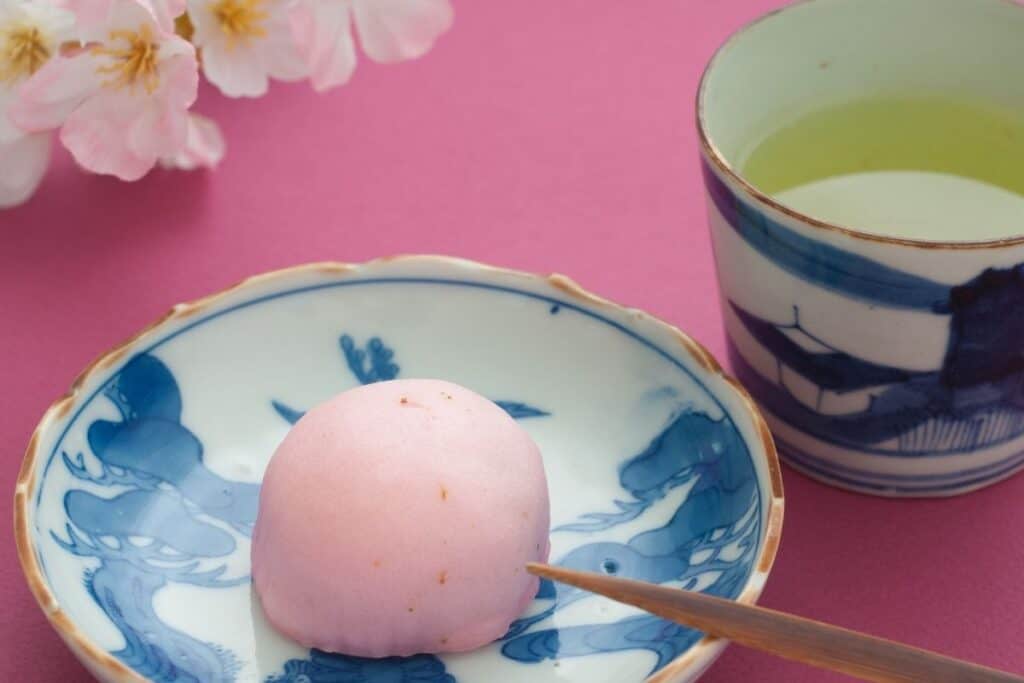
The artistic aspect of wagashi, according to Japanese people, reflects both a notion of the seasons in which wagashi is produced.
Kyoto has a lot of fantastic wagashi boutiques, while Asakusa’s Nakamise retail district is an excellent spot to try traditional Japanese wagashi in Tokyo.
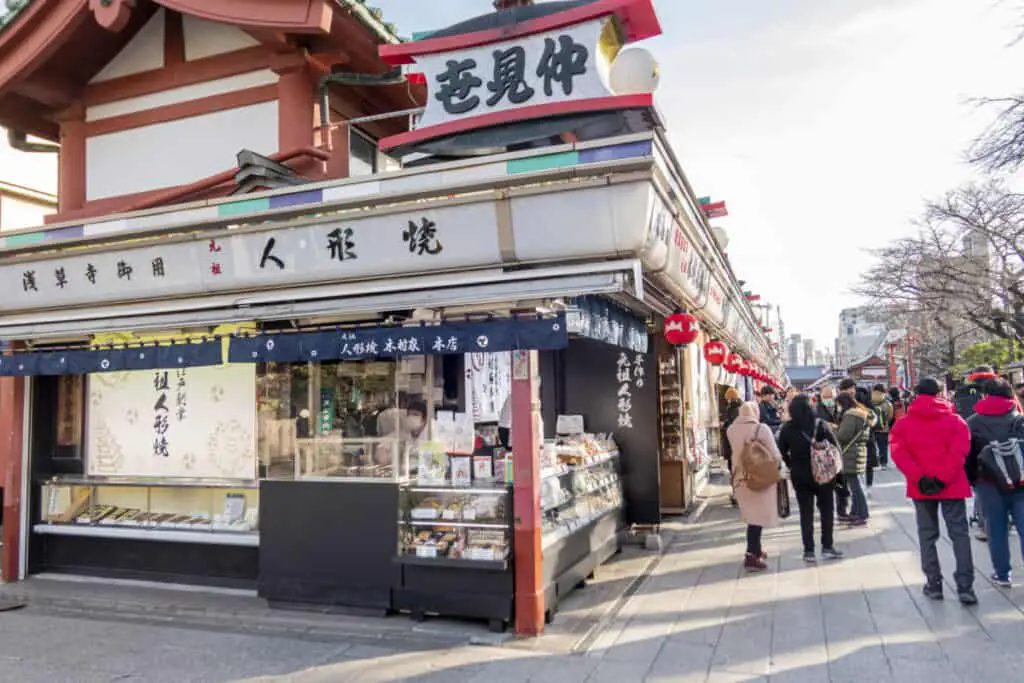
Types and Taste Of Wagashi
Akumaki
Kagoshima Prefecture, Miyazaki Prefecture, and Kumamoto Prefecture prepare this type of wagashi. The sticky rice is wrapped in bamboo skin that has been submerged in lye overnight. Akumaki is a rice cake that isn’t sticky and doesn’t dry out quickly. (Usually made during the boys festival, May 5th.)
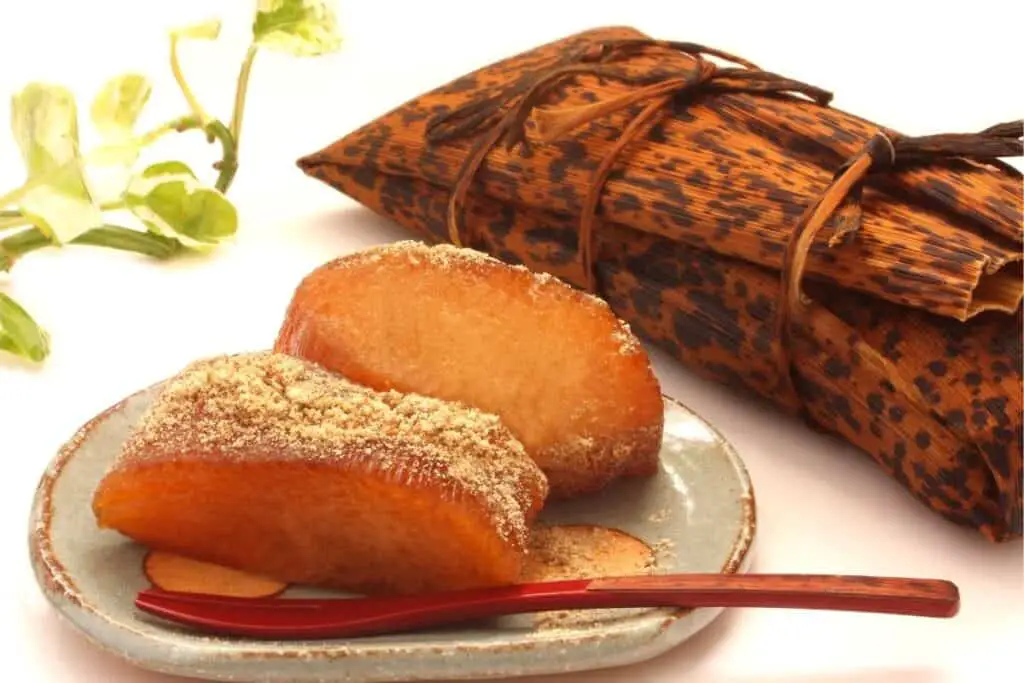
Anmitsu
Small cubes of agar jelly, a white transparent jelly produced from red algae, are used to make Anmitsu. To produce the jelly, the agar is dissolved in water. It is served in a dish with sweet azuki bean paste (anko), cooked peas (typically gyhi), and a variety of fruits like peach slices, mikan, pineapple chunks, and cherries.
Anmitsu is typically served with a tiny container of sweet black syrup, known as mitsu (the mitsu part of anmitsu), which is poured over the jelly before eating.
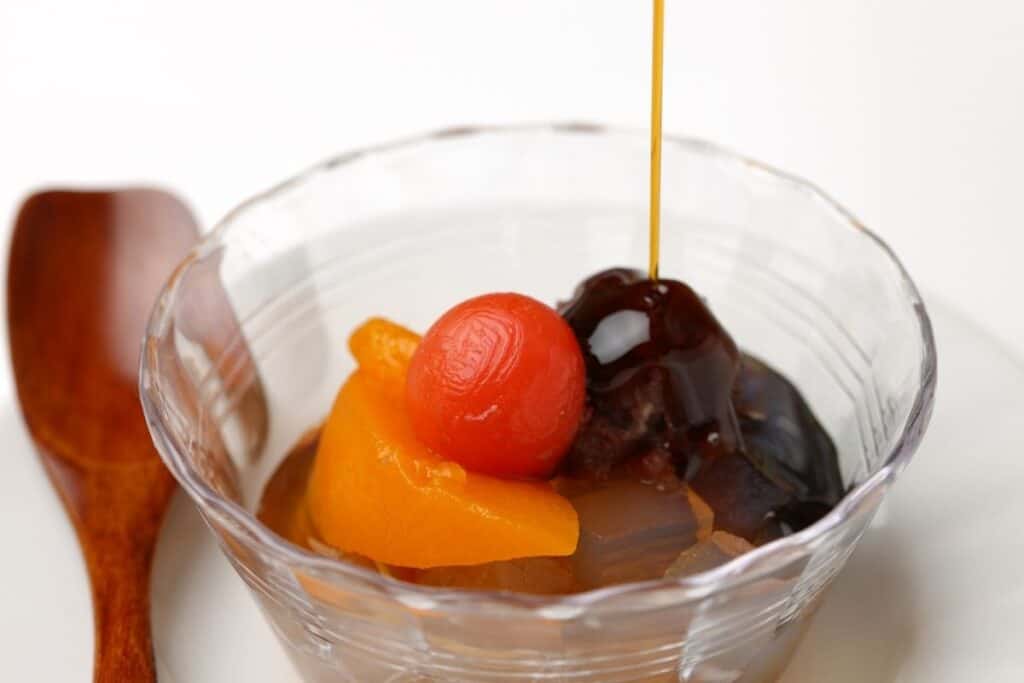
Amanattō
Made of azuki or other beans that have been simmered in sugar syrup and dried before being coated in refined sugar. It was created by Hosoda Yasubei during the Edo period’s Bunky years (1861–1863). In Tokyo, he started a wagashi shop called Eitaro, after his childhood name. This shop is still open for business.
Check out the 200-year-old shop Eitaro Wagashi Sweets
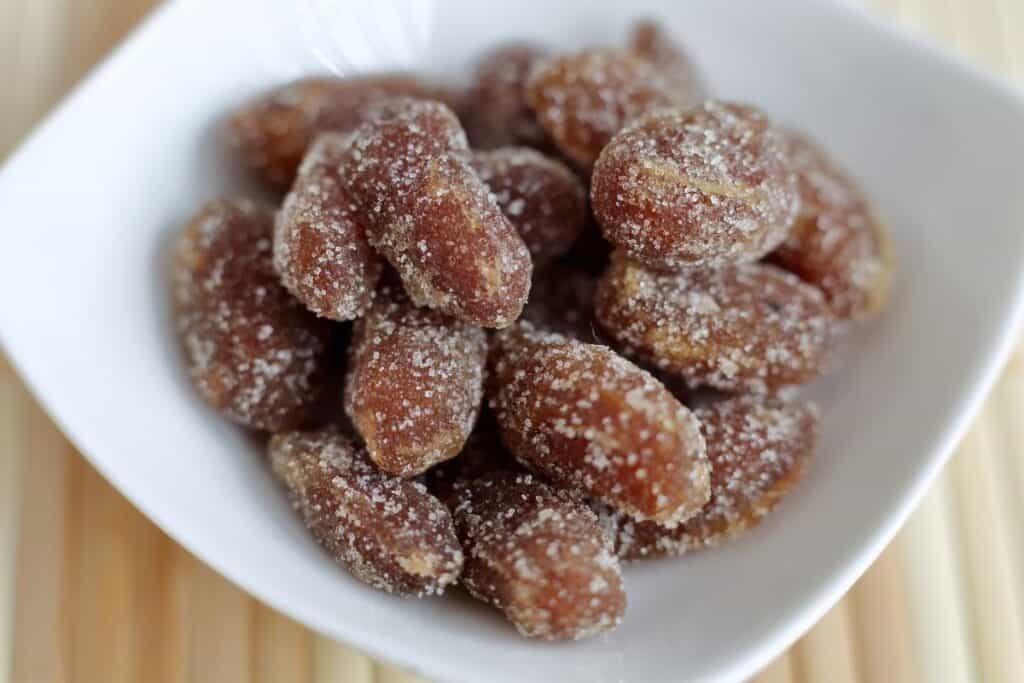
Botamochi
Glutinous rice, normal rice, and sweet azuki paste (red bean paste) are used to make this wagashi dessert. They’re prepared by immersing the rice for an hour or so. After that, the rice is cooked and a thick azuki paste is hand-packed around pre-formed rice balls.
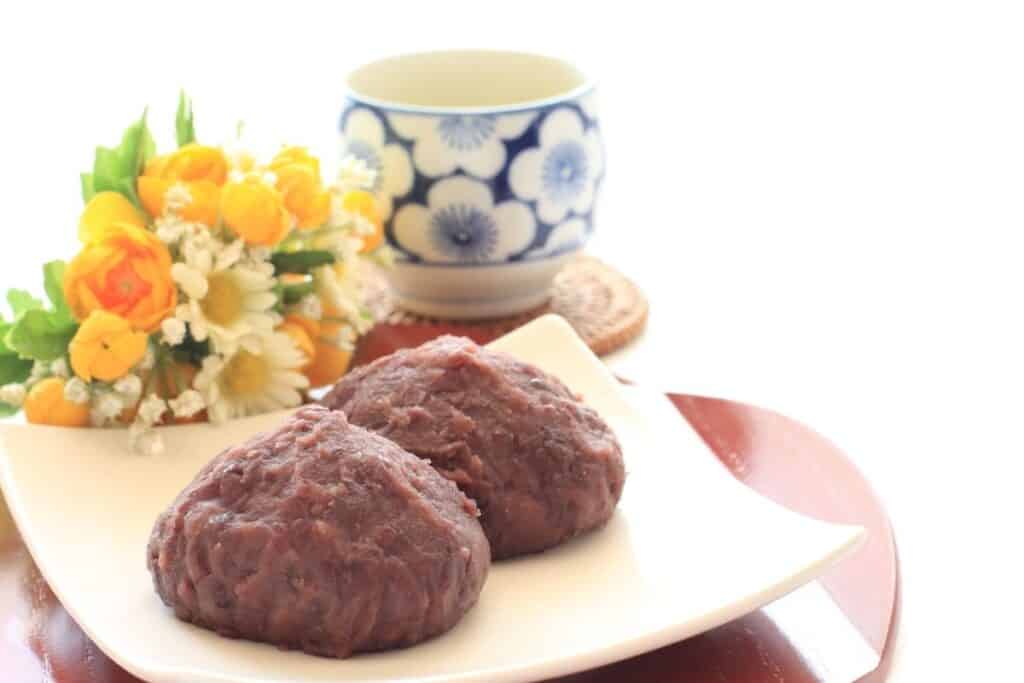
Daifuku
Sweetened red bean paste is prepared from azuki beans that are packed into a tiny oval mochi (glutinous rice cake). Daifuku is available in a wide range of flavors. White, light green or pale pink-colored mochi packed with anko are the most frequent. Daifuku has a diameter of around 1.5 to 2 inches.
To prevent them from sticking to each other or to the fingers, nearly all daifuku are coated with a very thin coating of rice flour.
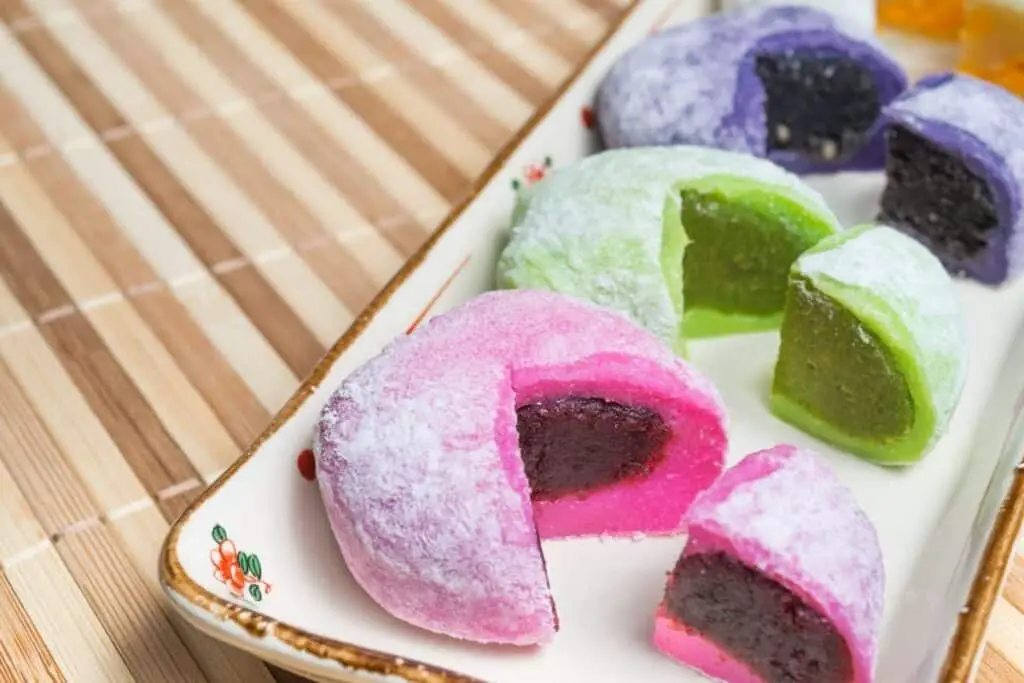
Dango
Rice flour, uruchi rice flour, and sticky rice flour are combined to make a dumpling. It differs from the traditional process of producing mochi, which involves heating sticky rice. Dango is in a circular form, and three to five dango are frequently served on a skewer named kushi-dango.
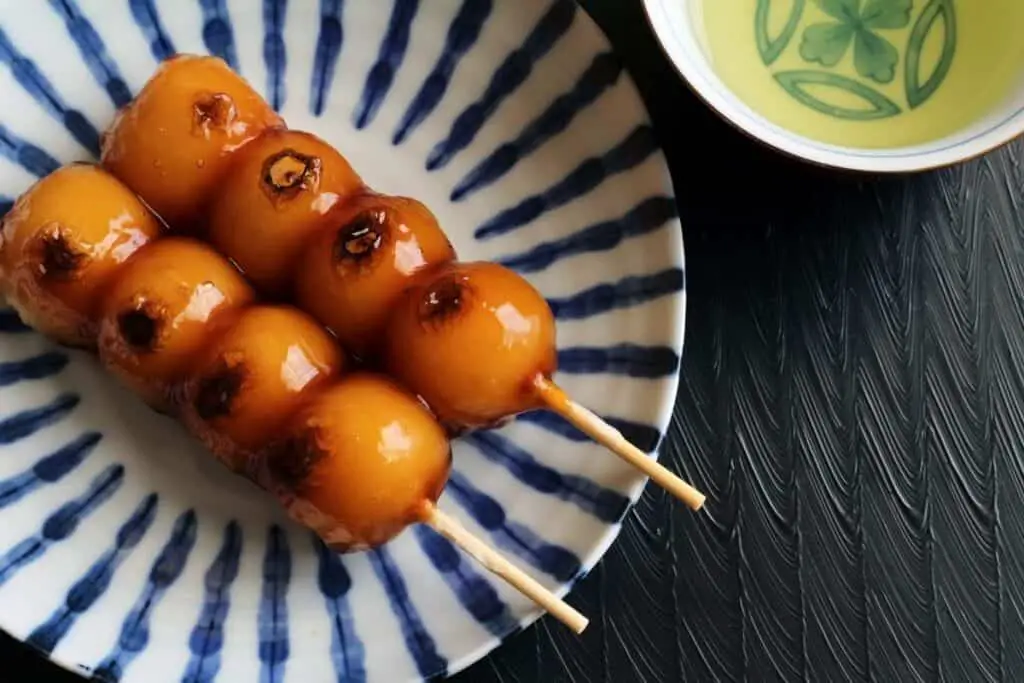
Dorayaki
It consists of two tiny castella cakes (pancake)-like patties wrapped around a sweet azuki bean paste filling.There was only one layer in the original Dorayaki. Usagiya in Tokyo’s Ueno district came up with the current design in the early 20th century.
Dora means “gong” in Japanese, and because of the resemblance of the forms, this is most likely the origin of the sweet’s name.
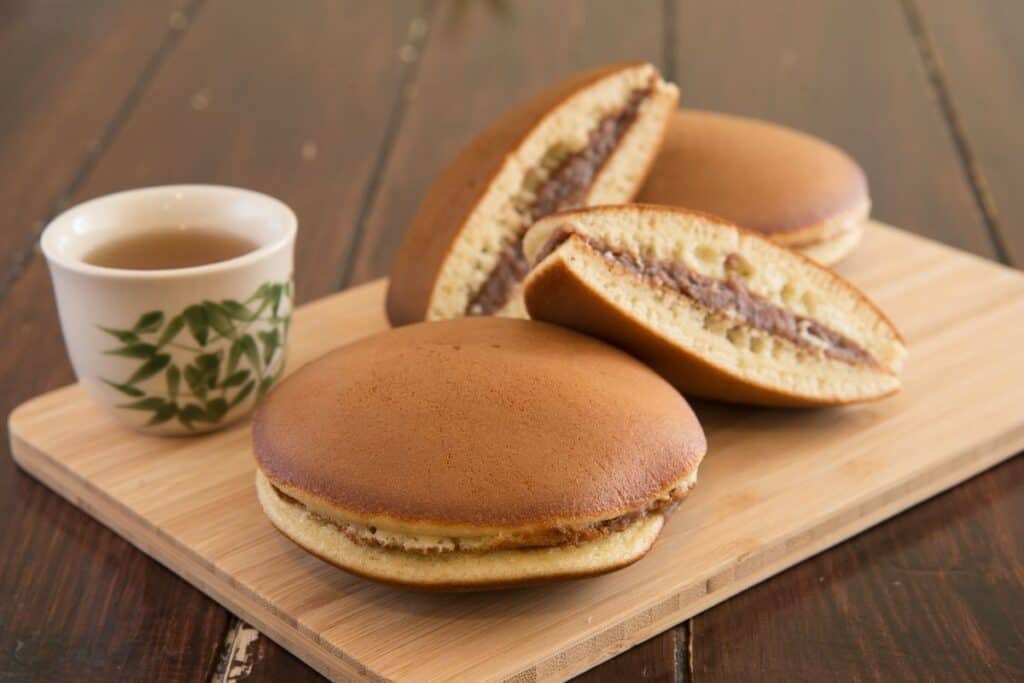
Imagawayaki
It is traditionally made with batter in a special pan (similar to a waffle iron but without the honeycomb pattern) and filled with sweet azuki bean paste, but it is increasingly popular to use a wider variety of fillings such as vanilla custard, various fruit custards, and preserves.
Imagawayaki and Dorayaki are similar, however, Dorayaki is made out of two distinct pancakes that are sandwiched around the filling after cooking and served cold.
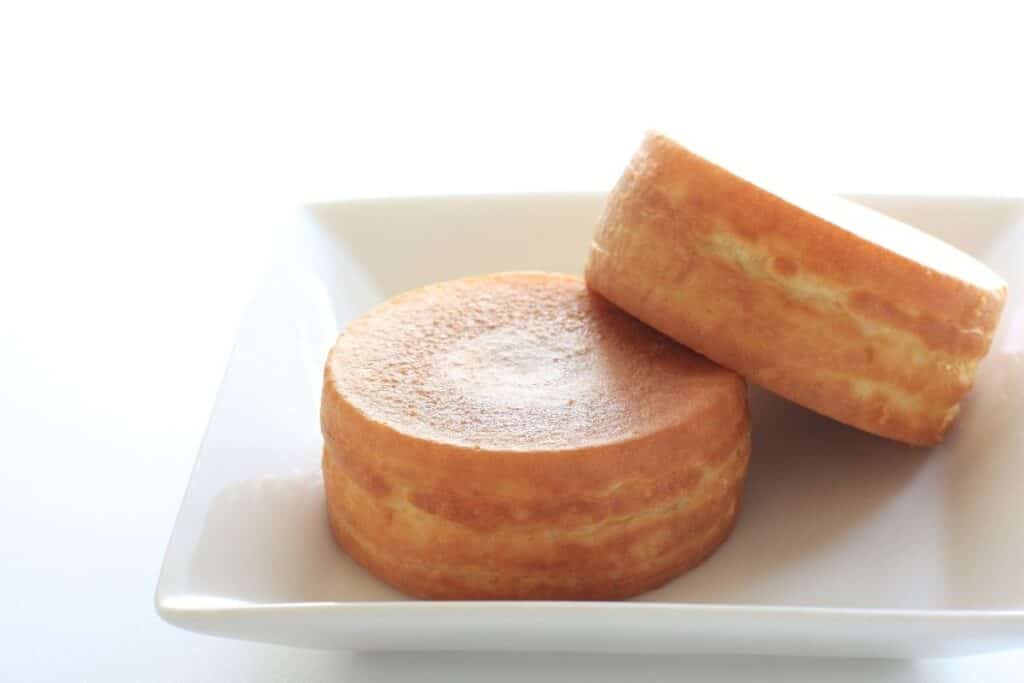
Konpeito
Sugar syrup is repeatedly coated over a grain of coarse sugar to create this wagashi. The core was once a poppy seed. The method is identical to that of dragée, except that the candies are made by ladling sugar syrup into a huge heated gong-shaped tub called a “dora” and rotating it gently.
With repeated rotation, heating, and application of syrup, each grain of core sugar develops into a ball with small bulges over the course of many days. Konpeit takes 7–13 days to create.
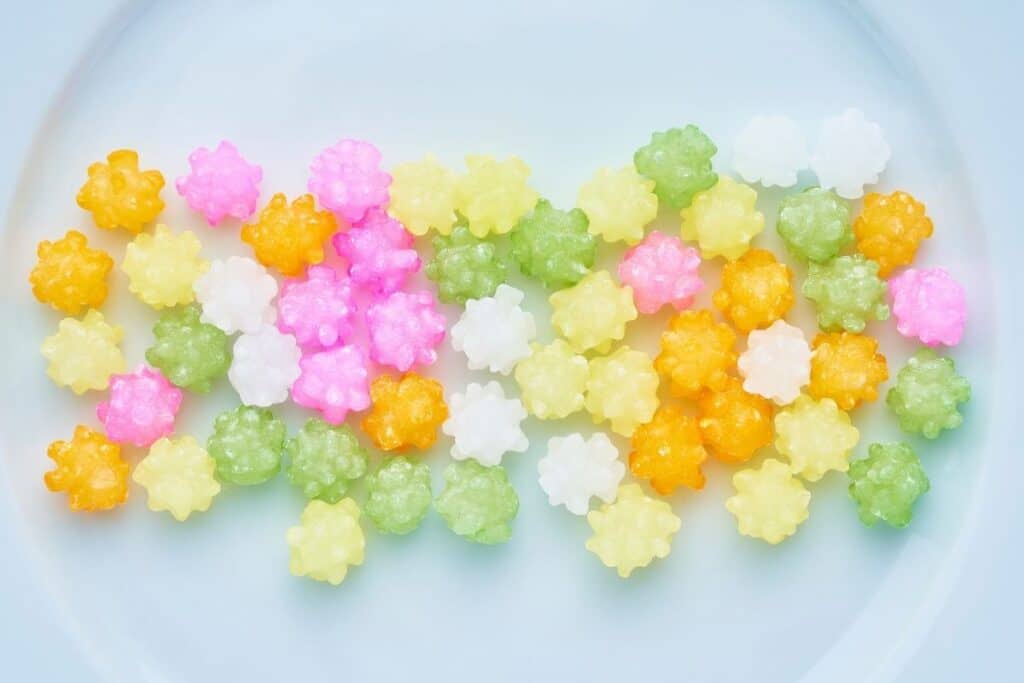
Kusa Mochi
It’s prepared using mochi and yomogi (also known as Japanese mugwort) leaves. Kusa mochi is a vibrant green color due to the use of Japanese mugwort in the dough. The quantity of Japanese mugwort in the mochi determines how green it is. It can also be used as a medicinal item.
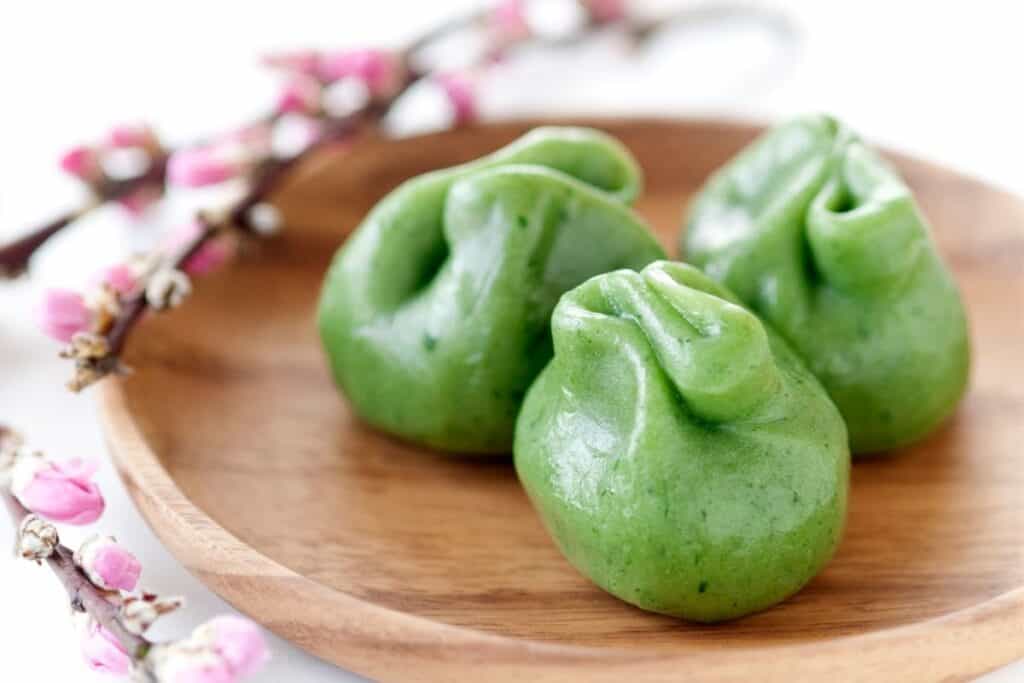
Manjū
A filling of anko (red bean paste), generally prepared from boiling adzuki beans and sugar, is sandwiched between layers of flour, rice powder, kudzu, and buckwheat. Other fillings, like chestnut jam, are sometimes used in manju.
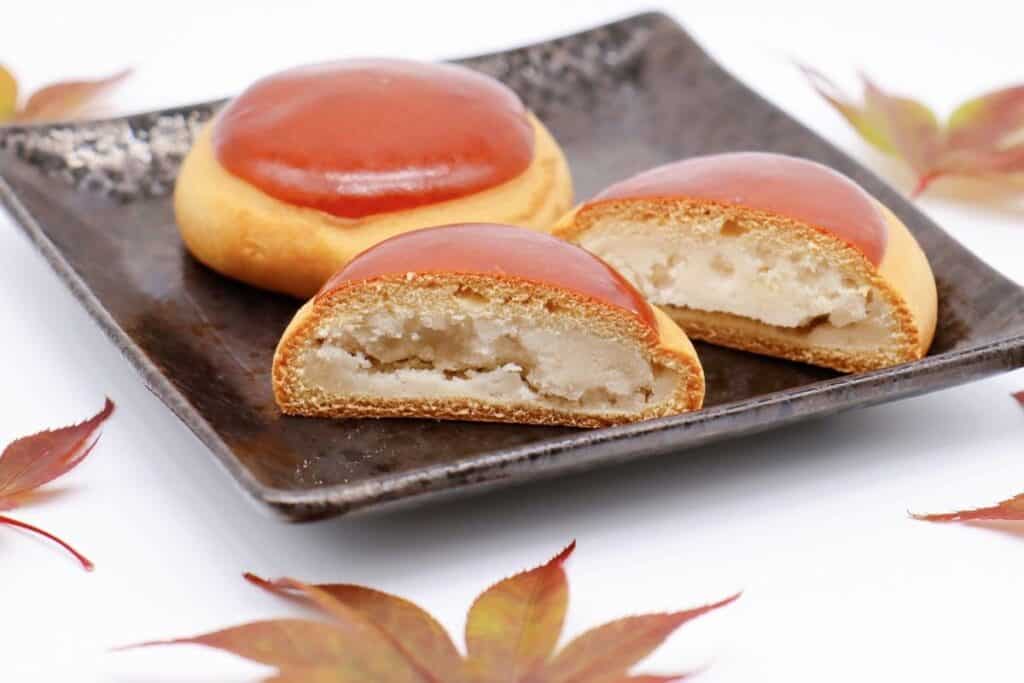
Mochi
Mochigome is a short-grain japonica glutinous rice with other components including water, sugar, and cornstarch. Rice is crushed into a paste before being shaped into the rounded shapes. It is typically prepared in Japan in a ritual known as mochitsuki.
Mochi is a traditional Japanese New Year dish that is frequently bought and consumed around that season.
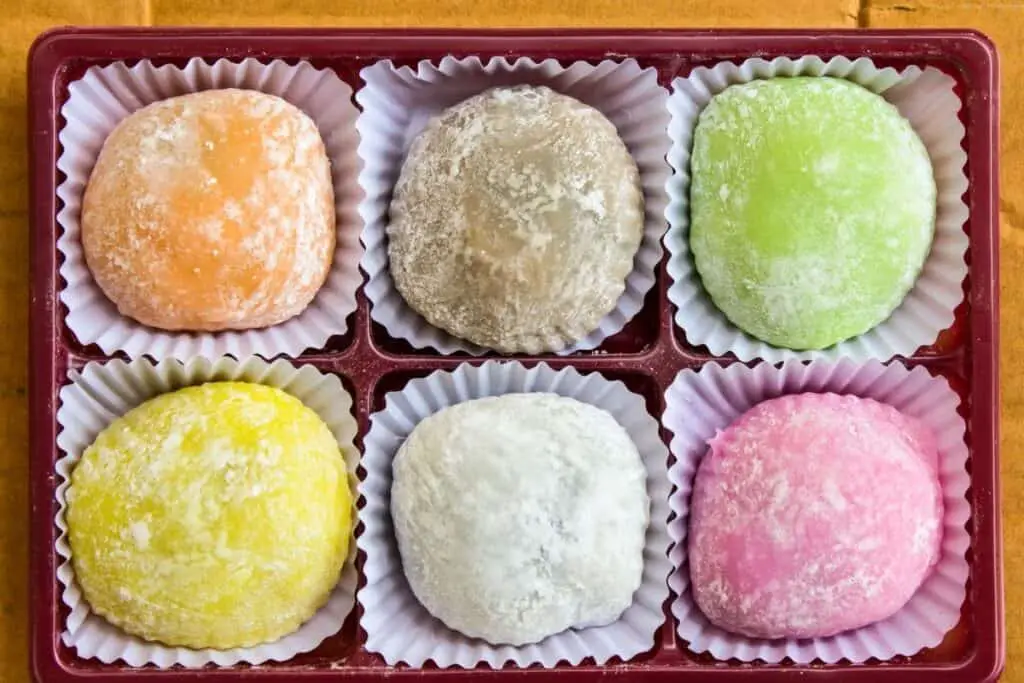
Monaka
Azuki bean paste is sandwiched between two mochi wafers, which are thin and crunchy. The wafers might be square, triangular, or even shaped like cherry blossoms, chrysanthemums, and other flowers.
Monaka might have sesame seeds, chestnuts, or rice cake in the azuki bean paste filling (mochi). Instead of azuki bean paste, an ice cream filling can be used in modern monaka.
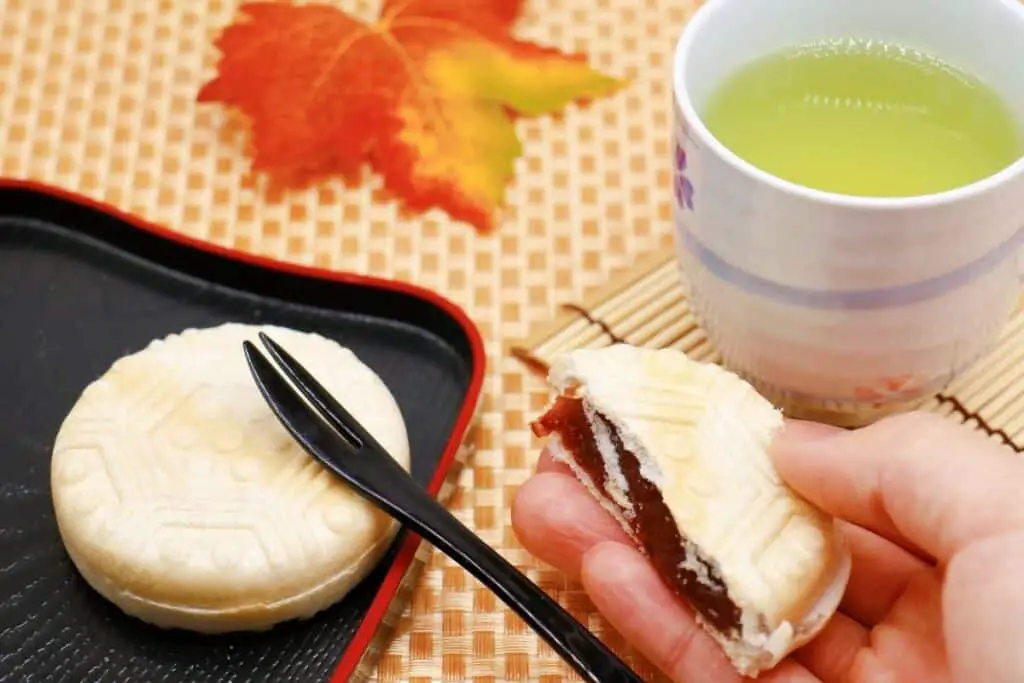
Sakuramochi
A pink-colored rice cake (mochi) with a red bean paste (anko) center and a pickled cherry blossom (sakura) leaf wrapped around it. Sakuramochi is made in a variety of ways throughout Japan. Kanto-style rice cakes are made using shiratama-ko (rice flour), whereas Kansai-style rice cakes are made with dmyji-ko (glutenous rice flour).
The sweet is popular throughout the spring season, particularly on Girl’s Day (hinamatsuri on March 3) and at sakura watching events (hanami). Depending on individual’s inclination, the leaf may or may not be eaten.
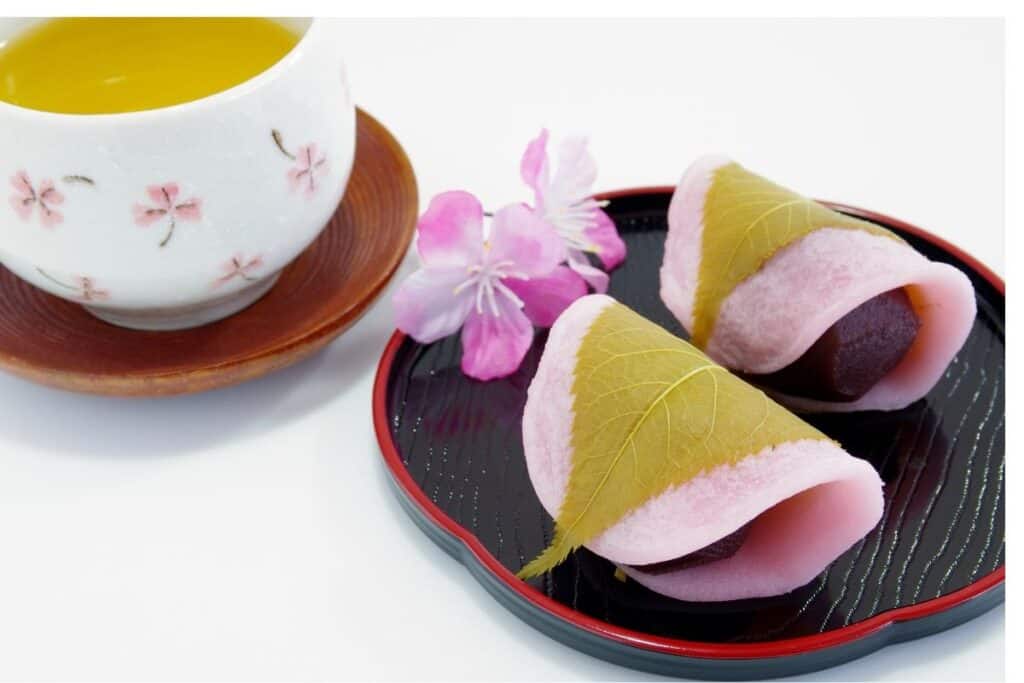
Taiyaki
A fish-shaped pastry popularly sold as street food in Japan. It is named after the tai (red seabream) after which it is modeled. Red bean paste, produced from sweetened azuki beans, is the most popular filling. Custard, chocolate, cheese, or sweet potato are all frequently used in the filling.
Regular pancake or waffle batter is used to make taiyaki. For each side, the batter is poured into a fish-shaped mold. The filling is then applied to one side of the mold, which is then closed. Then it’s fried till golden brown on all sides.
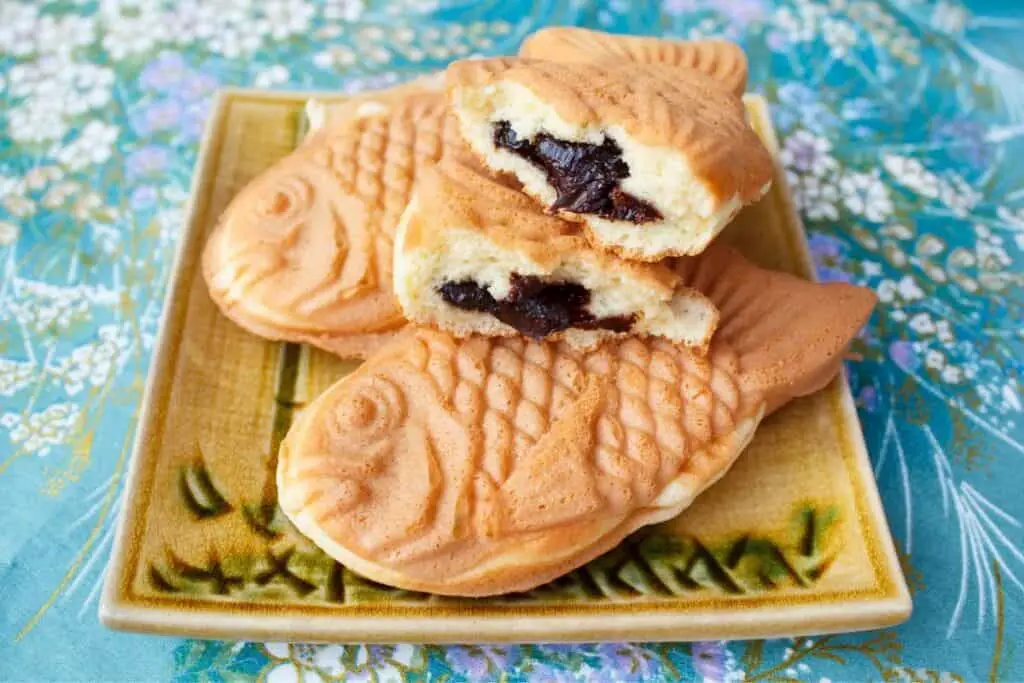
Uiro
Rice flour and sugar are used to make this dessert. It’s chewy, like mochi, and somewhat sweet. Azuki bean paste, green tea (matcha), yuzu, strawberry, and chestnut are among the flavors.
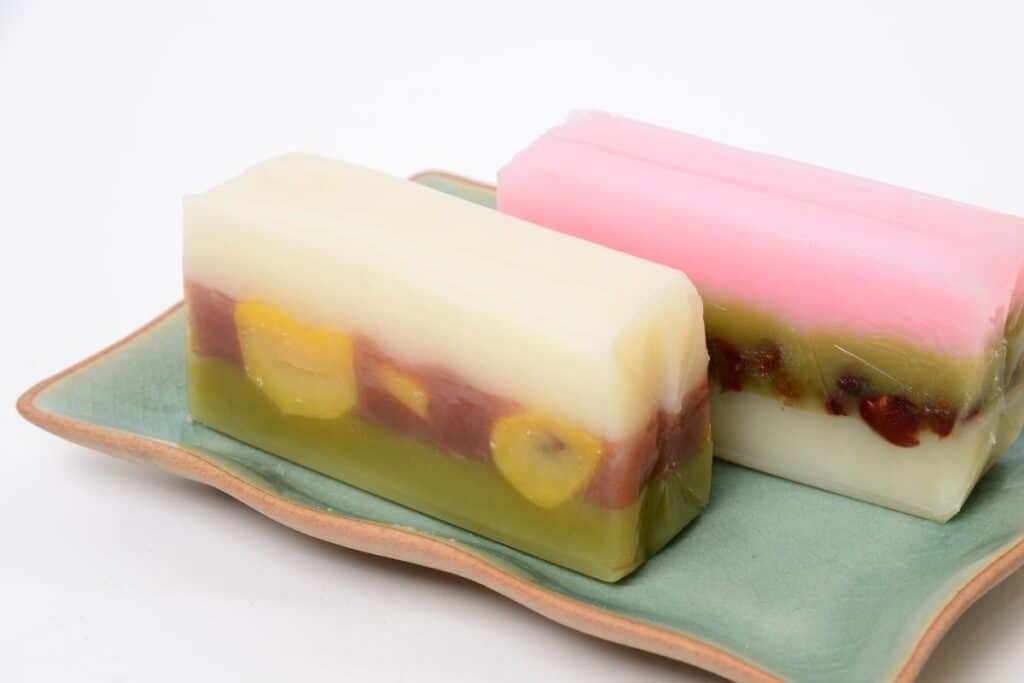
Namagashi
Fruit jellies, various gelatines including Kanten, and sweetened bean paste may be found in Namagashi. Namagashi is intricately detailed, with seasonal and natural themes like as leaves and flowers used to depict the different natural items seen in Japan’s four seasons. Commonly served during a traditional Japanese tea ceremony.
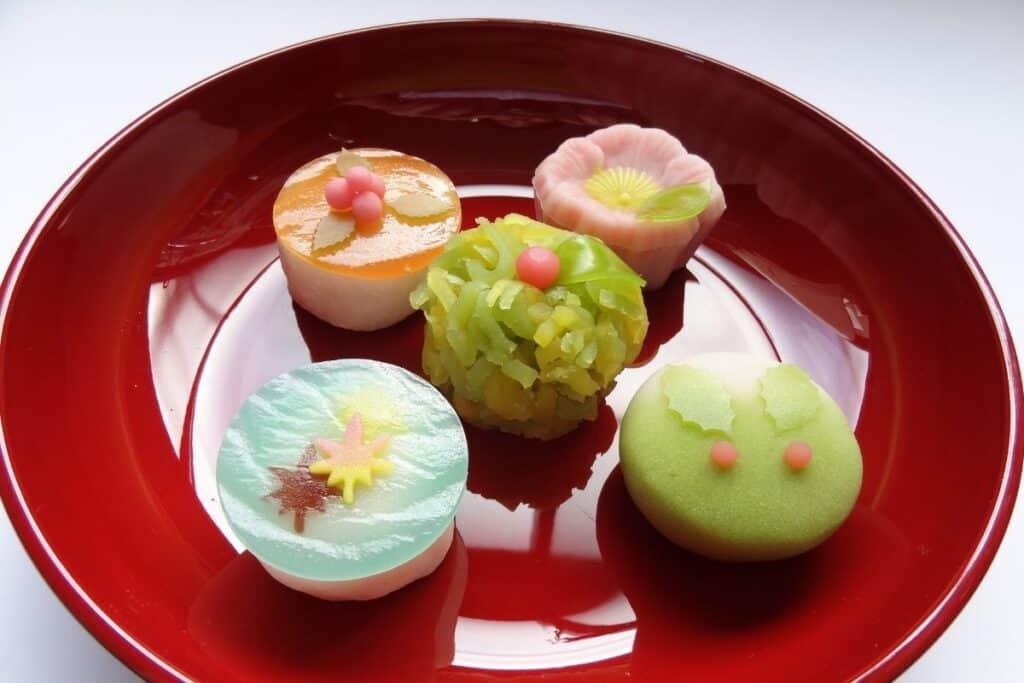
Wagashi is primarily plant-based, with no dairy and consistency provided by agar rather than gelatin. Wagashi are regarded to be healthier than traditional western sweets, which include processed components and high sugar content, due to the utilization of natural ingredients.

